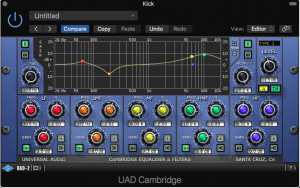The Reality of Step-by-Step Mixing Guides.
Every time I come across a ‘step-by-step’ guide on mixing, I shudder inside. I think of the thousands of budding mix engineers thinking, ‘Oh, this must be the way I fix my… [Insert problem],’ and away they go… down the rabbit hole again.
I shudder because I’ve been there. It’s horrible.
Mixing is both an art and a craft. So why is there such a prevalent trend online of promoting step-by-step guides to creating the perfect mix? They promise quick solutions, industry-quality results, and consistency in every mix.
Well, the truth is this: they’re not trying to help you out.
Stick with me, and let’s dive into the truth behind it all.
But first…
The ‘Ultimate’ Step-by-Step guide!!!
Let’s take a look at an example. Imagine a blog titled “The Ultimate Guide to Perfect Mixing: Follow These 10 Steps for a Professional Sound.”
- Set Your Levels: Start by ensuring all your tracks are properly leveled. Use a metering plugin and adjust until they all sit at -6 dB.
- Apply EQ: Cut the low frequencies on non-bass instruments, boost the high-mids for clarity, and add a gentle high-end boost for sparkle.
- Add Compression: Use a classic ratio of 4:1, attack at 10 ms, and release at 100 ms on all your tracks to make them sound cohesive.
- Reverb and Delay: Send all your tracks to a reverb bus at 30% wetness for a sense of space. Use a delay with a 1/4 note for depth.
- [Insert process]
- [Insert technique]
- [Insert tip]
- [Insert own personal opinion]
- Use This Template: Download our preset template to get consistent mixes every time.
- Get Industry-Quality Every Time: Congratulations! You’ve followed the steps to an industry-standard mix.
Sounds silly, doesn’t it? Imagine someone claiming they have a ‘proven way’ to transform you into a professional chef by following three simple steps: “Search, Season, and Serve.” We’d scoff at the idea, right? Yet, when it comes to mixing, sadly, a similar thing exists.
Next, we’ll take a look at the 4 key problems with online content of this type.
#1 – The Promise of Industry-Quality Results
Think back to the mixing content you’ve read in the past. How many times have you come across phrases like ‘the proven way,’ ‘get industry-quality every time,’ and ‘consistent mix every time?’
This language creates unrealistic expectations. And it’s often intentional. They want you to believe in the quick fix they’re offering (more on that later).
They imply you can achieve professional-level mixes without fail; overlooking the vast difference in skill and experience between beginners and industry professionals.
It falsely implies that professional-level mixing can be distilled into a few straightforward instructions.
#2 – Neglecting Our Most Important Tool.
Mixing, at its core, is about using your ears. It’s about developing a keen sense of sonic perception and making adjustments based on what you hear. Step-by-step guides downplay the importance of ear training and encourage a reliance on visual cues such as meters and graphs.
This neglects the fundamental aspect of learning to trust your ears and instincts, which is a crucial skill for any mixer. Real mixing expertise comes from years of practice, experimentation, and honing your listening skills.
These guides discourage the cultivation of this essential skill by implying there is a predefined formula for success.
Yes, guys and girls, they’re slowing your progress down.
#3 – Taking You Out Of The Moment.
Watch any pro mix engineer at work. They are present in the moment, allowing their experience and ears to guide them quickly and easily to incredible results.
By relying on predefined steps you shift focus from the creative ‘flow’ of mixing to a rigid pursuit of doing things “the right way.”
This shift will always hinder the natural process of mixing, discouraging experimentation, and stifling the individuality of each project.
#4 – Money, Money, Money.
Behind the scenes of these step-by-step mixing guides is a simple profit motive – driving traffic to sell products or services.
Whether it’s sample packs, plugins, online courses, or mixing services, these guides often serve as marketing tools to promote specific products or expertise.
Of course there’s nothing wrong with that in and of itself. And there are lots of great content creators that promote solid advice out there.
My issue is with the hyper-simplistic, formula-based step-by-step guides. The more you are convinced there’s a simple, foolproof method to mixing, the more likely you are to buy their products or services.
The key takeaway here is this:
It’s in their interest to make you believe that you can achieve professional results quickly. It fuels their business model.
By making readers feel like they are missing out on a groundbreaking technique or secret sauce, these guides encourage them to invest more money in their pursuit of better mixing results.
I mean, it’s just a bit shitty, right?
Embrace the Complexity of Mixing
In the world of audio mixing, there is no one-size-fits-all solution. It’s an art form that demands creativity, dedication, and a decent understanding of sound.
Instead of searching for shortcuts and quick fixes, aspiring mix engineers should embrace the complexity of the craft. Invest time in learning their gear, training their ears, and developing their own style.
It’s the journey of exploration and experimentation that leads to true mastery in audio mixing, not the illusion of a step-by-step process.
So, the next time you come across a blog promising “industry-quality mixes in 10 easy steps,” take it with a grain of skepticism. Remember, there are no shortcuts to genuine expertise; it’s a path paved with practice, passion, and commitment.
And remember, it’s supposed to be fun!



